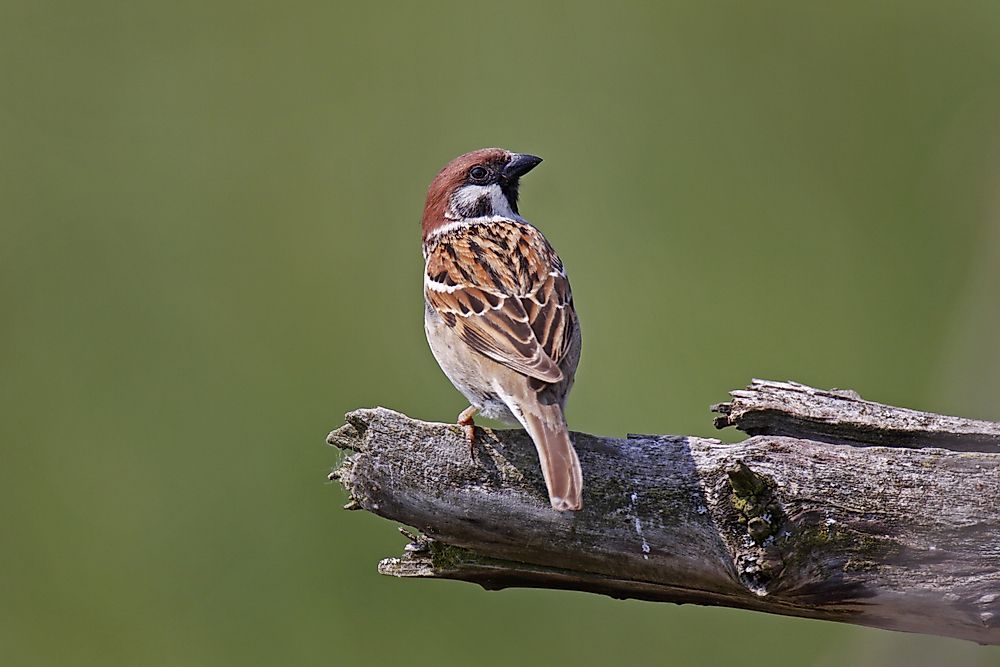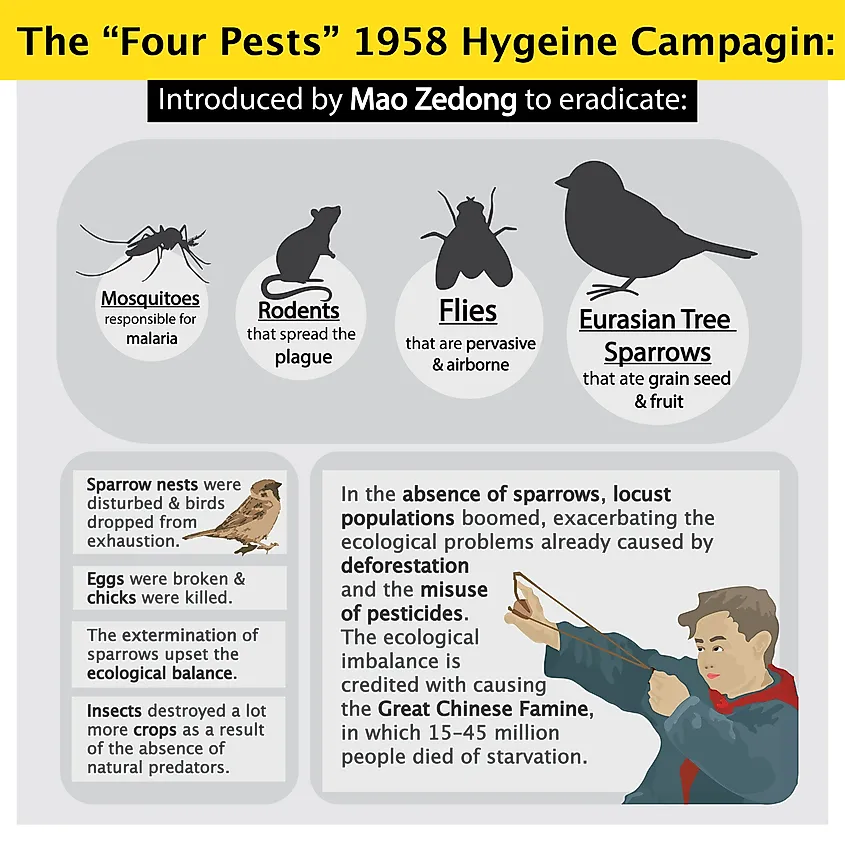The Four Pests Campaign: Objectives, Execution, Failure, And Consequences

What Was the Four Pests Campaign?
Between 1958 and 1962, the Communist Party of China led an economic and social movement throughout the country known as the Great Leap Forward. One of the movement's first campaigns was the Four Pests Campaign, which is also sometimes known as the Great Sparrow Campaign or simply Kill a Sparrow Campaign. Mao Zedong, or Chairman Mao, initiated the Four Pests Campaign as a move toward public hygiene, with the following considered as pests: rats, flies, mosquitoes, and sparrows.

Three of the four pests were identified because of their role in spreading malaria, typhoid, and the plague. Sparrows were included in this list because they consume rice and other seeds from agricultural fields.
Execution of the Four Pests Campaign
The Communist Party called Chinese citizens to act together against what were considered pests. The government published posters illustrating the need for fly swatters, drums, gongs, and guns as tools in the fight for improved public health. People reacted by taking all measures in order to kill these four animals. Sparrows received a large portion of this attention, as citizens were encouraged to make noise with pots, pans, and drums, which scared the sparrows and resulted in them falling from the sky from exhaustion. Additionally, nests were torn apart, eggs broken, and fledglings killed. The government encouraged these actions by accolading schools, work groups, and government agencies who had the highest number of pests killed.
Estimates suggest that the government and the public were responsible for the deaths of 1.5 billion rats, 1 billion sparrows, over 220 million pounds of flies, and over 24 million pounds of mosquitoes. In terms of accomplishing its objective, the Four Pests Campaign was a success.
Unintended Consequences of the Four Pest Campaign
Besides rendering the sparrow nearly extinct in China, the Four Pests Campaign led to the starvation and death of between 20 and 43 million people. As it turns out, the sparrow was an integral piece of crop protection. Not only do sparrows eat grains, but also insects. In 1959, researchers at China’s Academy of Sciences performed autopsies on several of the dead sparrows. The discovered that the majority of their stomach contents was made up of insects and not grains, as was previously believed. After the campaign had been underway for some time, the insect population in China grew exponentially, particularly that of locusts, given that the sparrow is their only natural predator. Because of this imbalance between predator and prey, the locust excess was able to swarm freely over the country, eating the majority of the agriculture intended for human consumption.
The Great Chinese Famine
The locusts ate hundreds of thousands of pounds of grain. This ecological imbalance was exacerbated by conditions of drought, flooding, and other changes to agricultural policies. By 1959, crop production had been reduced by 15%. This decline continued to 70% in 1958. When the famine ended, between 15 and 36 million individuals had died due to starvation.
Changes to the Four Pests Campaign
After the government realized the important role of sparrows in pest control and successful agricultural harvests, it implemented change to the Four Pests Campaign. The campaign against sparrows was ended by the government. Chairman Mao replaced the sparrow target with bed bugs. While this move may have helped the country exterminate bed bug infestations, it had no effect on the agricultural damage and did nothing to prevent the Great Famine.
The Great Leap Forward campaign ended in 1962 and with it, so did the Four Pests Campaign. However, in 1998, the Chinese government revived a new version of the movement. Posters were seen in Beijing and at the Southwest Agricultural University in Chongqing, urging citizens to kill the four pests. This time, the four pests are: rats, flies, mosquitoes, and cockroaches. The campaign wasn’t as successful given that people had already been killing these insects before the posters were hung.
Influence of the Four Pests Campaign
The Four Pests Campaign has gone on to influence music, TV shows, and books. In 2009, the TV show Rosy Business was aired. It was about life in the mid-19th century in China and a merchant family’s troubles surrounding inheritance of the family business. In one of the episodes, a farmer promoted the idea that killing sparrows would be a good way to protect the local harvest. However, the idea was intended to harm other farm owners and their crops in order to bring about poverty and starvation.











